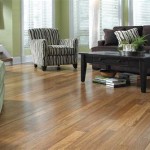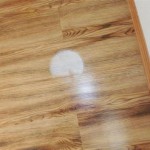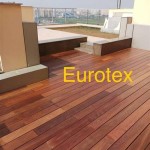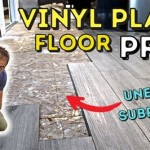Cost To Refinish Hardwood Floors Per Square Foot: A Comprehensive Guide
Refinishing hardwood floors is a significant home improvement project that can dramatically enhance the aesthetic appeal and value of a property. Understanding the costs associated with this process is crucial for homeowners seeking to budget effectively and make informed decisions. The primary cost factor is often measured "per square foot," but this figure can vary considerably depending on several elements. This article will dissect the various aspects that influence the cost to refinish hardwood floors per square foot, providing a detailed overview of the factors involved.
The cost of refinishing hardwood floors is influenced by the existing condition of the flooring, the type of finish chosen, the size and complexity of the project, and the geographic location of the property. Labor costs can also vary significantly depending on the experience and reputation of the contractor hired. Additionally, unexpected issues discovered during the refinishing process, such as hidden damage or the need for subfloor repairs, can impact the overall expense.
Factors Influencing the Per-Square-Foot Cost
Several key factors contribute to the total cost of refinishing hardwood floors per square foot. These factors should be carefully considered when obtaining estimates from different contractors to ensure accurate budgeting and avoid potential surprises during the project.
1. Condition of Existing Floors: The existing condition of the hardwood floors is a primary determinant of the refinishing cost. Floors that are severely damaged, uneven, or have extensive wear and tear will require more extensive preparation, increasing both material and labor costs. Minor scratches and surface imperfections are relatively easy to address, while deep gouges, water damage, or cupping require more intensive sanding, repair, and potentially board replacement.
Heavily damaged floors may necessitate multiple passes with sanding equipment, using various grits of sandpaper to achieve a smooth, even surface. This process requires more time, specialized equipment, and potentially more experienced labor, all of which contribute to a higher per-square-foot cost. Furthermore, if significant portions of the flooring are beyond repair, board replacement may be necessary. This involves removing the damaged boards and replacing them with new ones that match the existing flooring. Board replacement adds to the material costs and the labor required, further increasing the overall price.
2. Type of Finish: The type of finish chosen for the hardwood floors also significantly impacts the cost. Different finishes vary in price, durability, and application complexity. Common types of finishes include polyurethane, water-based finishes, oil-based finishes, and penetrating oil finishes.
Polyurethane finishes are generally durable and relatively affordable, making them a popular choice. Oil-based polyurethane offers excellent durability and a warm, amber tone, but it typically has a longer drying time and emits stronger odors. Water-based polyurethane is a more eco-friendly option with lower VOC emissions and a faster drying time, but it may be slightly more expensive than oil-based alternatives. The application process for polyurethane typically involves multiple coats with sanding in between, adding to the labor time.
Water-based finishes offer advantages such as lower odor and faster drying times, but they may require more coats to achieve the desired level of durability, potentially increasing the material cost. Oil-based finishes tend to be more durable and provide a richer color, but they have a longer drying time and emit stronger odors. Penetrating oil finishes, such as tung oil or linseed oil, penetrate the wood fibers to provide protection from within. These finishes often require more maintenance and may not be as durable as polyurethane options, but they can enhance the natural beauty of the wood.
The choice of finish will also impact the necessary equipment and techniques. For instance, some finishes may require specialized applicators or ventilation systems. The number of coats required, the drying time between coats, and the complexity of the application process all influence the labor costs associated with the project.
3. Project Size and Complexity: The size of the area being refinished directly affects the overall cost. Larger areas will naturally require more materials and labor hours. However, the per-square-foot cost may decrease slightly for larger projects due to economies of scale. Contractors may offer a discounted rate for larger jobs, as the setup and mobilization costs are spread over a greater area.
The complexity of the project also plays a significant role. Rooms with intricate layouts, numerous corners, or obstacles (such as built-in cabinets or stairs) will require more time and precision to refinish. These areas may necessitate hand-sanding or specialized equipment to reach difficult spots, increasing the labor costs. Additionally, if the project involves refinishing hardwood floors in multiple rooms with varying conditions, the complexity will increase, potentially leading to a higher per-square-foot cost.
Staircases, in particular, present a significant challenge for refinishing. Each step requires individual attention and often involves hand-sanding to achieve a smooth finish. The presence of spindles or railings can further complicate the process, adding to the labor time and cost. Complex patterns or borders in the hardwood flooring can also increase the difficulty and expense of refinishing.
4. Labor Costs: Labor costs represent a significant portion of the total cost to refinish hardwood floors. These costs can vary based on the contractor's experience, reputation, and the geographic location. Experienced contractors with a proven track record typically charge higher rates, but they also offer a higher level of expertise and quality workmanship.
Before hiring a contractor, it is essential to obtain multiple quotes and carefully review the scope of work included in each estimate. The estimate should clearly outline the preparation process, the type of finish to be used, the number of coats to be applied, and any additional services (such as furniture removal or floor cleaning). It is also prudent to check the contractor's credentials, licenses, and insurance coverage to ensure they are qualified and reputable.
In addition to the hourly or per-square-foot labor rate, factors such as travel time, material delivery, and site cleanup can also impact the overall labor costs. It is important to clarify these charges with the contractor upfront to avoid any surprises on the final invoice. Some contractors may charge a flat fee for the entire project, while others may bill on an hourly or per-square-foot basis. Understanding the billing method is crucial for accurate budgeting.
5. Geographic Location: The geographic location of the property also influences the cost of refinishing hardwood floors. Labor costs and material prices can vary significantly between different regions. Areas with a higher cost of living typically have higher labor rates, while remote areas may have higher material costs due to transportation expenses.
Local regulations and building codes can also impact the cost. Some areas may require permits for certain types of flooring work, which can add to the overall expense. Additionally, environmental regulations may restrict the use of certain types of finishes, potentially limiting the options and affecting the material costs.
It is advisable to obtain quotes from multiple contractors in the local area to get a sense of the prevailing market rates. Online resources and local review sites can also provide valuable information on average costs and contractor reputations.
Additional Costs to Consider
In addition to the factors outlined above, there are several other potential costs to consider when budgeting for a hardwood floor refinishing project. These additional costs can arise from unexpected issues or optional services that may be necessary to complete the project successfully.
1. Furniture Removal and Replacement: Moving furniture out of the area to be refinished is a necessary step, and it can incur additional costs. If homeowners are unable to move the furniture themselves, they may need to hire professional movers or pay the contractor to handle the furniture removal. The cost of this service will depend on the amount and weight of the furniture, as well as the distance it needs to be moved.
Protecting existing furniture from dust and debris during the refinishing process is also important. Contractors may use plastic sheeting or drop cloths to cover furniture, but this may be an additional charge. After the refinishing is complete, the furniture needs to be moved back into the room, which can also incur labor costs.
2. Subfloor Repairs: During the floor preparation process, contractors may discover hidden damage to the subfloor. Subfloor damage can result from water leaks, insect infestations, or structural issues. Repairing or replacing the subfloor is essential to ensure a stable and level surface for the refinished hardwood floors.
The cost of subfloor repairs will depend on the extent of the damage and the type of materials required. Minor repairs, such as patching small holes or cracks, may be relatively inexpensive. However, extensive damage may necessitate replacing entire sections of the subfloor, which can significantly increase the overall cost of the project.
3. Baseboard and Trim Work: Refinishing hardwood floors can sometimes damage or necessitate the removal of baseboards and trim. If the baseboards and trim need to be replaced or reinstalled, this will add to the overall cost. The cost will depend on the type of baseboard and trim, the complexity of the installation, and the labor rate of the contractor.
Painting or staining the baseboards and trim may also be necessary to match the new finish of the hardwood floors. This can be done as a separate project or included as part of the overall refinishing scope of work.
4. Dust Containment: Sanding hardwood floors can generate a significant amount of dust, which can spread throughout the house. Dust containment measures can help minimize the mess and protect other areas of the home. Some contractors offer dustless sanding services, which utilize specialized equipment to capture dust as it is generated.
Dustless sanding can be more expensive than traditional sanding methods, but it can save time and effort on cleanup. Alternatively, contractors may use plastic sheeting and tape to seal off the work area and prevent dust from spreading. The cost of dust containment will depend on the size and complexity of the project, as well as the contractor's methods.
Saving Money on Hardwood Floor Refinishing
While refinishing hardwood floors can be a significant investment, there are several ways to potentially save money on the project. Planning carefully, obtaining multiple quotes, and being willing to handle some of the tasks yourself can help reduce the overall cost.
1. DIY Preparation: Homeowners can save money by handling some of the preparation tasks themselves. This may include removing furniture, removing baseboards, and cleaning the floors before the contractors arrive. However, it is essential to be cautious and avoid damaging the floors or subfloor during the preparation process.
2. Negotiate with Contractors: Obtaining multiple quotes from different contractors is crucial for comparing prices and negotiating the best deal. Be sure to clearly explain the scope of work and ask for a detailed breakdown of the costs. Some contractors may be willing to negotiate on price, especially during off-peak seasons.
3. Consider Alternatives to Refinishing: In some cases, alternatives to refinishing may be a more cost-effective option. For example, if the floors only have minor surface scratches, a screen and recoat may be sufficient to restore their appearance. A screen and recoat involves lightly sanding the existing finish and applying a new coat of finish. This process is less labor-intensive and less expensive than a full refinishing.

The Cost To Refinish Hardwood Floors 7 Things You Need Know

Cost To Refinish Hardwood Floor Refinishing Fixr

Cost To Refinish Hardwood Floors In 2024 Angi

How Much Does It Cost To Refinish Hardwood Floors Modernize

How Much Does It Cost To Refinish Hardwood Floors

How Much Does It Cost To Refinish Hardwood Floors Lv Flooring Toronto

Cost To Refinish Hardwood Floor Refinishing Fixr

Hardwood Floor Refinishing Cost Urban Customs

How Much Does It Cost To Refinish Hardwood Floors Modernize

How Much Does It Cost To Refinish Hardwood Floors In Westchester
Related Posts








